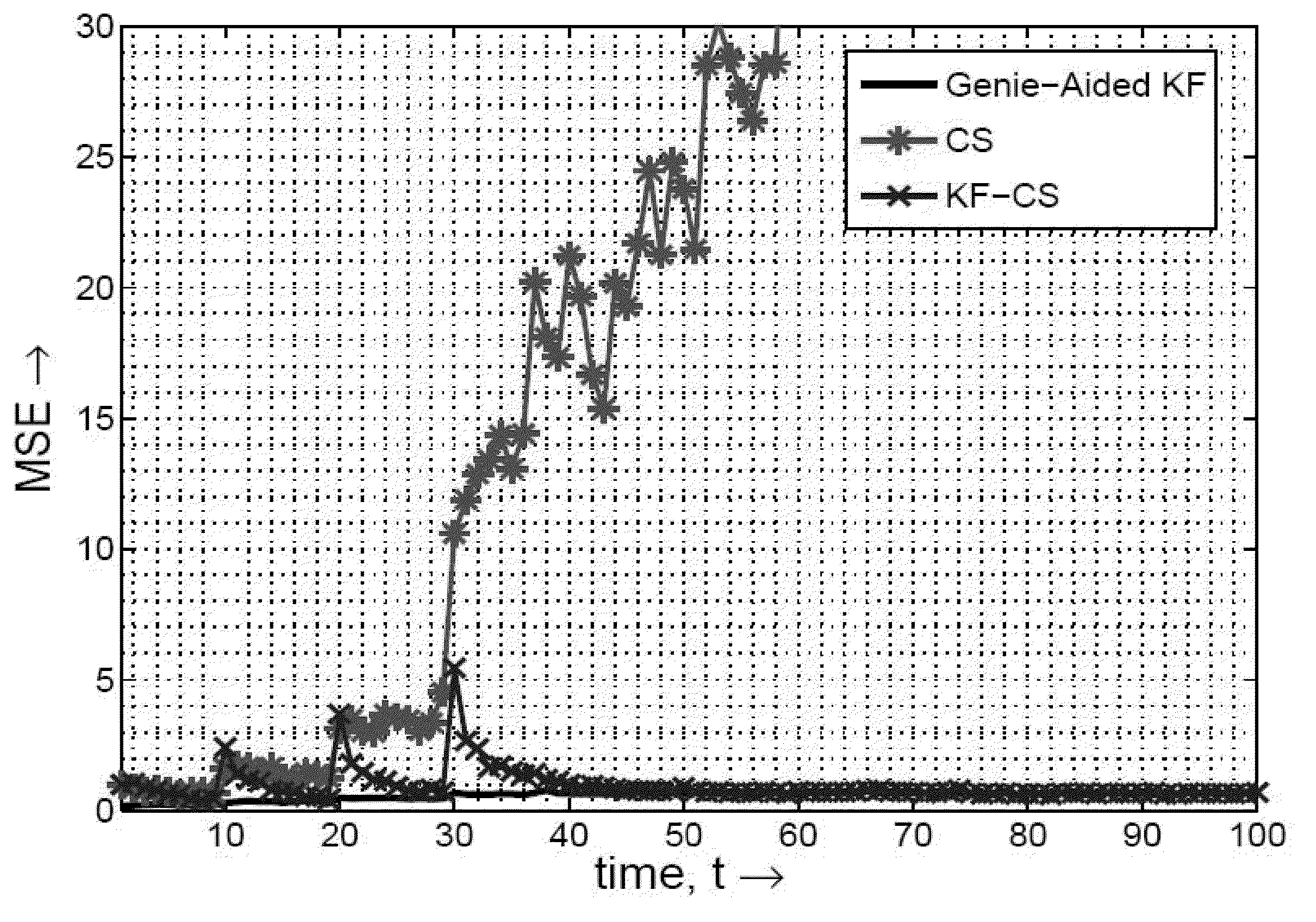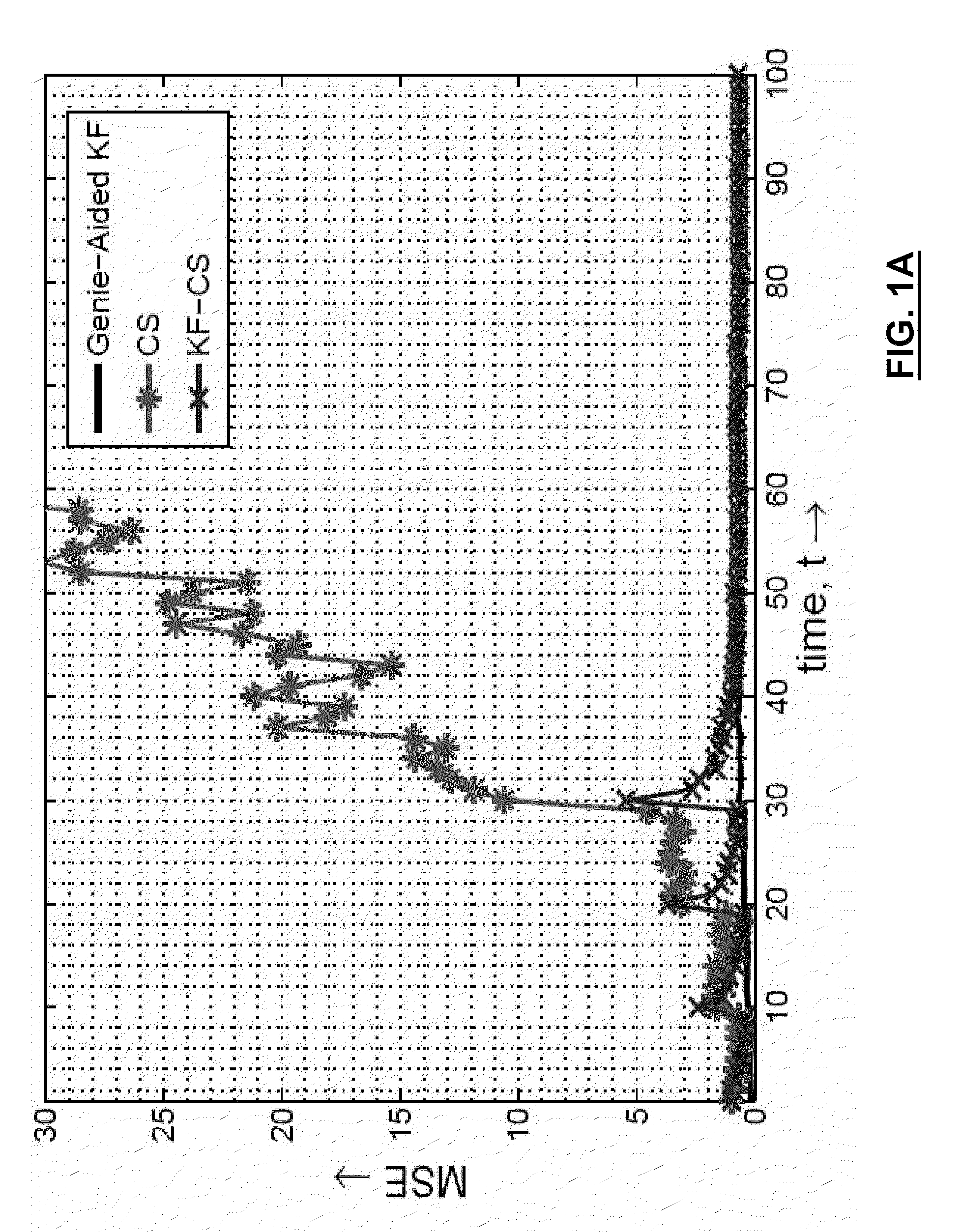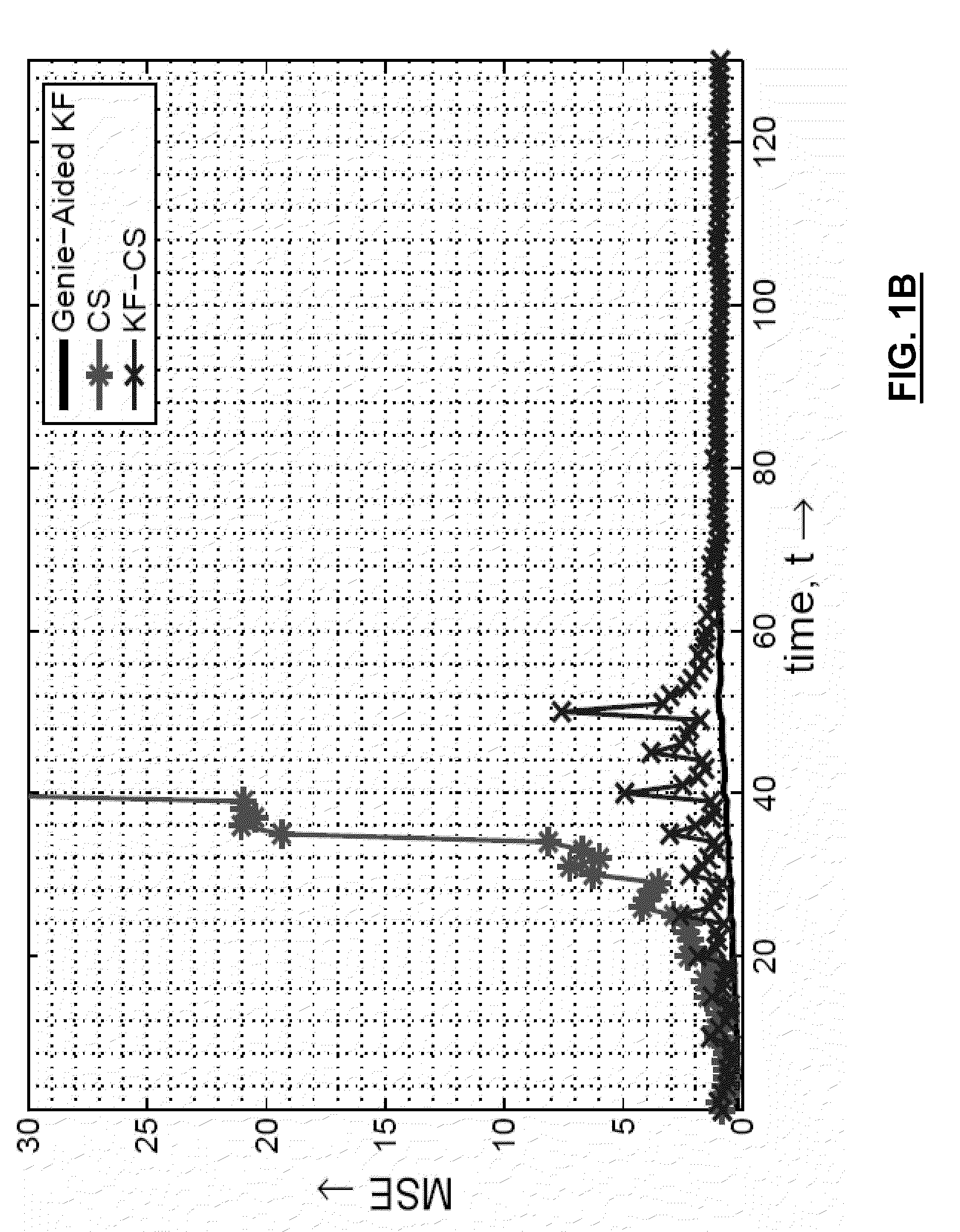Recursive sparse reconstruction
a sparse signal and reconstruction technology, applied in the field of signal processing, can solve the problems of offline performance of most compressed sensing solutions, unfavorable real-time applications, and inability to capture and display real-time video
- Summary
- Abstract
- Description
- Claims
- Application Information
AI Technical Summary
Benefits of technology
Problems solved by technology
Method used
Image
Examples
Embodiment Construction
[0034]We consider the problem of reconstructing time sequences of spatially sparse signals (with unknown and time-varying sparsity patterns) from a limited number of linear “incoherent” measurements, in real-time. The signals are sparse in some transform domain referred to as the sparsity basis. For a single spatial signal, the solution is provided by Compressed Sensing (CS). The question that we address is, for a sequence of sparse signals, can we do better than CS, if (a) the sparsity pattern of the signal's transform coefficients' vector changes slowly over time, and (b) a simple prior model on the temporal dynamics of its current non-zero elements is available. Various examples of the design and analysis of recursive algorithms for causally reconstructing a time sequence of sparse signals from a greatly reduced number of linear projection measurements are provided.
[0035]In section 1 we analyze least squares and Kalman filtered compressed sensing. Here, the overall idea is to use...
PUM
 Login to View More
Login to View More Abstract
Description
Claims
Application Information
 Login to View More
Login to View More - R&D
- Intellectual Property
- Life Sciences
- Materials
- Tech Scout
- Unparalleled Data Quality
- Higher Quality Content
- 60% Fewer Hallucinations
Browse by: Latest US Patents, China's latest patents, Technical Efficacy Thesaurus, Application Domain, Technology Topic, Popular Technical Reports.
© 2025 PatSnap. All rights reserved.Legal|Privacy policy|Modern Slavery Act Transparency Statement|Sitemap|About US| Contact US: help@patsnap.com



